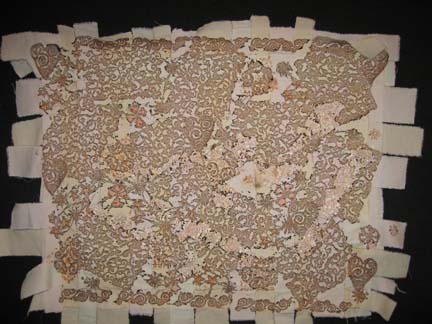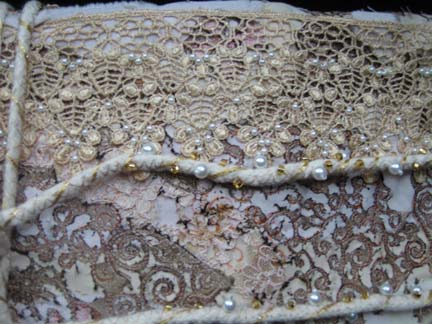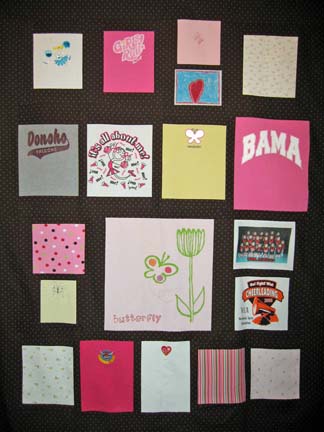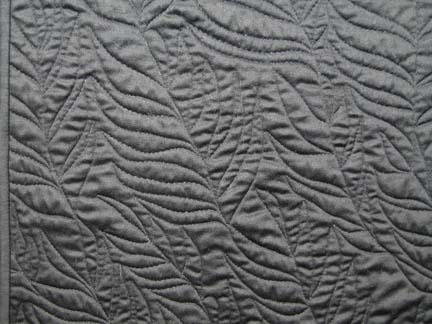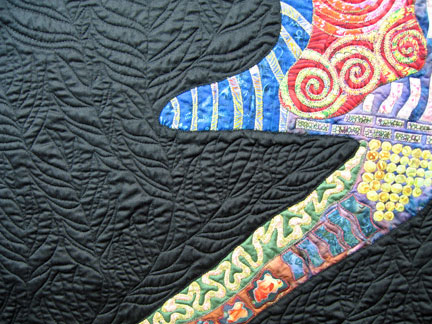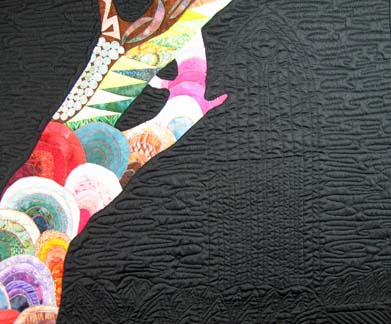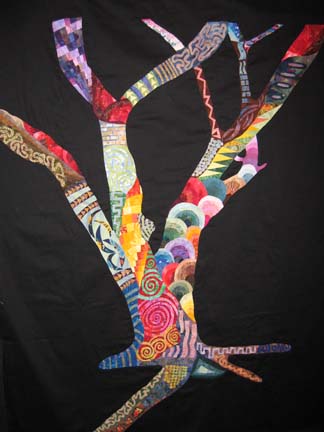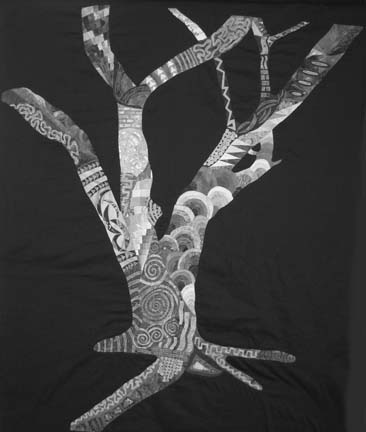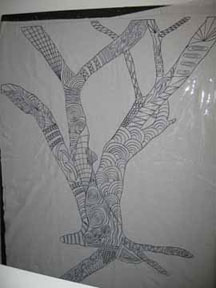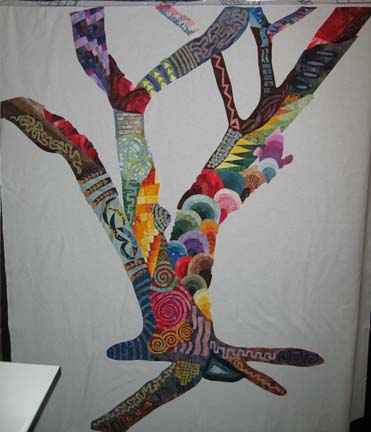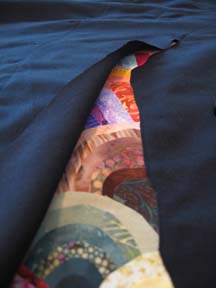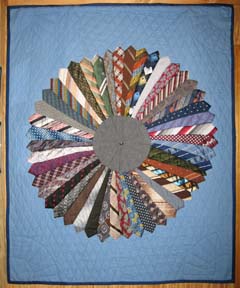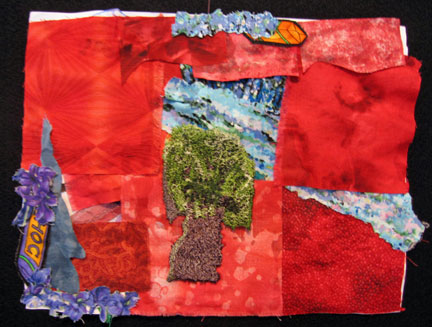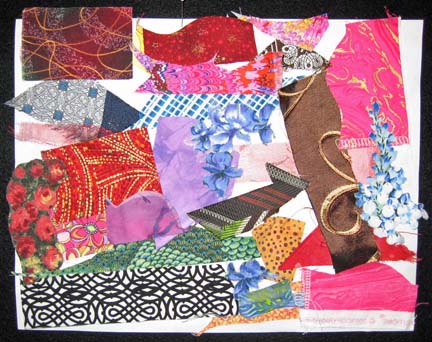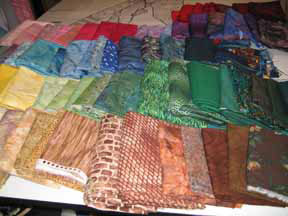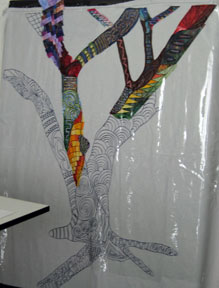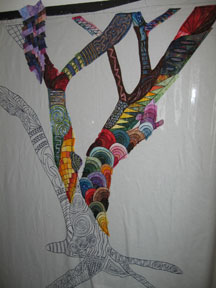I have finally finished quilting my “I Am the Vine” quilt. I am always intimidated by all of that blank space and usually end up scribbling on it with a water soluble pen for inspiration, so when I’m done washing it, I’ll take pictures and talk about the quilting. I am finishing the binding today — I’ve never been a fan of the handwork and I usually have to have something else going on at the same time. So yesterday, I started tea & coffee dyeing.
I was really intrigued by the article on book covers in the latest issue of Quilting Arts. I decided that it would be interesting to make a white on white book cover — but I needed the correct materials first. So I brewed up some Red Zinger and instant coffee and threw in some fabric.
I actually started with Red Zinger and used some fabric that my mother-in-law gave me when she cleaned up her sewing room. I have no idea what the material is — well, after dyeing it, I can guess.

The original fabric, which is a little yellow, is on the right. The strip on the left was dyed in Red Zinger for an hour and I used vinegar as a mordant. It was the most beautiful blush color before I put it in the vinegar. I actually did strips of this twice. The first time, I let it steep in the tea for an hour, hang dry, and then rinsed it in vinegar and water. All of the color came out. I was crushed. Then I remembered that I needed to iron it after it dried on the line — and then rinse in vinegar. So I did it again — and again, most of the color came out. I am fairly certain that this is a poly cotton blend — and I have no idea if it has been pre-washed — and it probably hasn’t. I think that there might also be a finish on the fabric resisting the stain. It looks like it didn’t take any color, but comparing it to the original fabric, it is more grey now than before.
Knowing that I had instant coffee granules on hand and some lace in the drawer, I batched up coffee and threw in the lace.
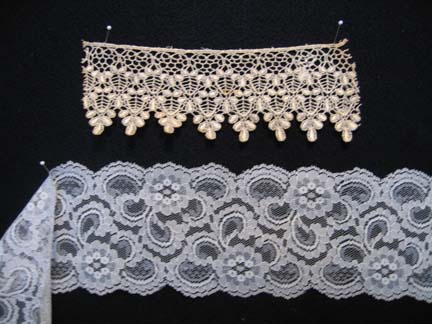
Neither of these are cotton laces. The one on the top came out beautiful. It started off very bleached white and turned a soft caramel color. However, the one on the bottom did not work as well. It also started off white and the coffee stained it beautifully, but most all of the color came out in the vinegar and water — in fact, I did this one twice also, which unfortunately did nothing to improve its appearance.
I ran out of Red Zinger, as did my local Wal-Mart, so I raided my daughter’s stash of Raspberry Zinger in order to dye some white Kona cotton (at least I knew the fabric content of this piece of fabric & suspected that it would take this technique better than the polyester blends). This time, rather than make my strips and then dye the strips, I got smart and dyed a bigger piece. When I get ready to use it, I’ll rip it into strips. Much easier to work with. I’m not certain why this didn’t occur to me in the first place.
The one on the left is the white Kona cotton, and the one on the right is the beautiful raspberry that I got.

Not a great picture — but you get the idea. The color changed significantly & gave me a wonderful blush color.
I had to buy some polyester organza, so while I was at the store, I also bought some cheesecloth and some lace that was on the clearance table. I dyed both of them in the raspberry and coffee.
This is the cheesecloth. The original white is in the middle, the raspberry is on the left, and the coffee is on the right.
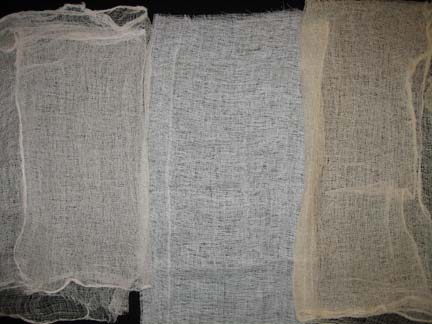
The raspberry cheesecloth was disappointing. It lost most of its lovely color in the vinegar & water. The coffee worked very well.
This is the lace — I have no idea of its fabric content, although I doubt that any of it is cotton.
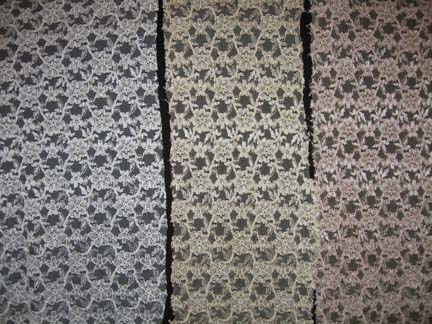
The panel on the left is the original white, the middle one is the coffee, and the one on the right is the raspberry. The coffee was wonderful but mellowed to a soft yellow in the vinegar and water — and the raspberry was the most wonderful surprise. The netting is a soft beige-y brown and the roses are light pink.
I read somewhere that pomegranates can be used, and I got some good hints from the QuiltArt list today — may try that tomorrow.
Surprises are part of the fun. I now have wonderful inspiration for a book cover.

